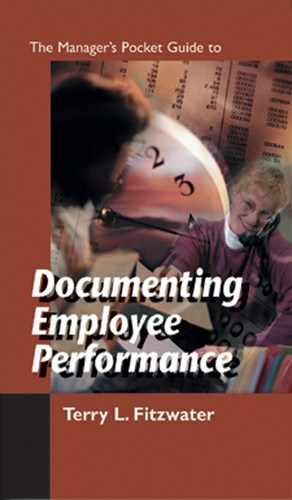These two problems are common headaches for managers. There are two keys to resolving them:
1. Address the problem early on, when you first notice it. The average employee misses around five days of work a year; any more than that is an issue worth discussing.
2. Look for patterns in the problem behavior. Monday and Friday absences, which create a three-day weekend, are common.
The guidelines below are applicable to both problems. “Cures” specific to each problem will follow.
General Guidelines: Absenteeism and Tardiness
_____________________________________
Maintain records.
• Keep accurate attendance records. Look for patterns; Mondays and Fridays, special events or holidays, repetitive reasons for absence.
• Keep records of instances of tardiness.
Notify problem employee in a timely fashion.
• Make the employee aware that excessive absenteeism or tardiness is unacceptable. Define excessive. Follow precedent.
• Solve small problems before they become big ones.
Use disciplinary process for violations.
• Follow disciplinary process—verbal, written, and final discussions—when problems arise.
Practice preventive methods.
• Establish expectations at hiring date.
• Demonstrate appreciation for good attendance and punctuality. Publicize the excellence of those who keep to the rules.
The Unexcused Absence
To help “cure” the unexcused absence, establish a clearly stated call-in policy. An effective policy will state the employee must notify the company, by phone, in the half-hour period before the shift’s start. The call must be received by the employee’s supervisor or someone serving in a management capacity; calls to coworkers, or notification via coworkers, do not meet the policy requirements.
Remedy: The Unexcused Absence
_____________________________
• Establish a clear policy for absenteeism.
— All absences must be reported within a half hour before start of workshift.
— Three consecutive days of “no call, no show” result in termination documented as job abandonment.
— Isolated instances of unexcused absenteeism merit disciplinary action.
• Enforce the policy.
— Again, timely action for violations is crucial.
— Be consistent across employees when enforcing policy. Avoid exceptions to policy.
Tardiness
Always use a step process for tardiness to give the employee ample time to correct the problem. It is generally useful to spell out your expectations in the verbal discussion. For example, “The next instance may result in a written discussion.”
Remedy: Tardiness
__________________
• Determine acceptable and unacceptable rates of tardiness. Ensure employees know what they are.
• Always use the disciplinary process for tardiness.
• Note patterns of tardiness and take immediate action.
• Discuss with the employee….
— your course of action
— the reasons for the tardy behavior
— how to resolve the problem
• Ensure consistency from one employee to another.
• Value punctuality in employees.
Limitation
When reviewing the possibility of discipline for absenteeism and tardiness always consider whether the employee’s absences are protected by law. The Family Medical Leave Act and the Americans with Disabilities Act, along with
Workers
Compensation Statutes and Pregnancy Leave Statutes may limit your ability to discipline. Know the reasons behind the absences before you take disciplinary action.
